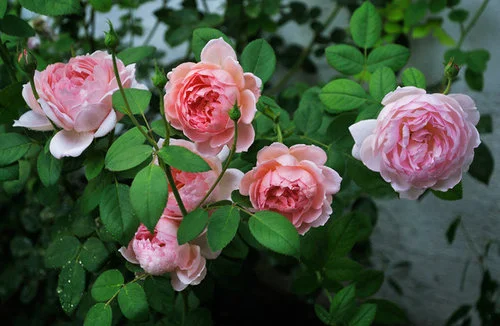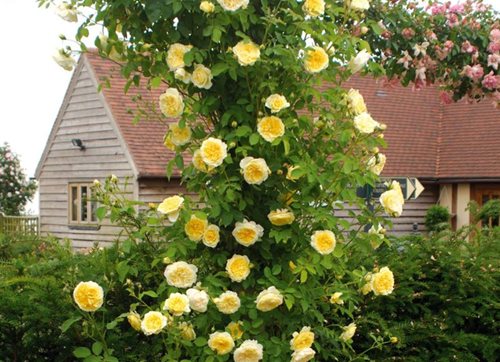How to Plant Roses in Southern California

Roses are one of the most popular flowers in the world and have been grown for centuries. They come in a wide variety of colors, sizes, and shapes, and their blooms can last for weeks or even months. If you live in Southern California, you’re in luck because roses thrive in this climate.
Here are some tips on how to plant roses in Southern California so that you can enjoy their beauty all year long.
- Find a location in your yard that gets at least 6 hours of sunlight each day
- Roses need lots of sun to thrive
- Prepare the planting area by removing any weeds or other plants
- Add some organic matter to the soil to help improve drainage and add nutrients
- Dig a hole that is about twice as wide as the roots of your rose bush
- Gently remove the rose bush from its container and loosen the roots before planting it in the hole you dug
- Fill in around the plant with soil, and water well
How to Grow Roses in Southern California
What are the Best Months to Plant Roses in Southern California
One of the best things about roses is that they can be planted almost any time of year in Southern California. However, for the healthiest and most robust plants, it’s best to plant them during the cooler months, from October through April. This gives the roots time to establish themselves before the heat of summer sets in.
It’s also important to remember that roses need at least six hours of sunlight per day, so choose a spot in your garden accordingly.
What Type of Rose is Best Suited for Southern California
There are many types of roses that can do well in Southern California. Some varieties that come to mind include:
-Hybrid teas: These are the classic long-stemmed red roses that most people think of when they hear the word “rose.”
They are very popular in Southern California gardens.
-Floribundas: These roses are similar to hybrid teas, but they have multiple blooms on each stem. They come in a wide range of colors and can be very beautiful in the garden.
-Grandifloras: These are large, showy roses that make excellent specimens or centerpieces in the garden. Like floribundas, they also have multiple blooms on each stem.
So, which type of rose is best suited for Southern California?
The answer really depends on what you’re looking for in a rose. If you want a classic long-stemmed rose, then a hybrid tea would be a good choice. If you want something with multiple blooms per stem, then either a floribunda or grandiflora would be ideal.
Ultimately, it’s up to you to decide which type of rose you like best!
How Often Should I Water My Roses
Assuming you are referring to roses in a garden:
The amount of water that roses need depends on many factors, including the climate, soil type, mulch, and whether the plants are newly transplanted or established. In general, however, roses require about 1-2 inches of water per week.
Watering frequency also depends on these same factors. For example, in hot weather or sandy soil, roses may need to be watered more often than in cooler weather or clay soils. Established plants will also require less frequent watering than newly transplanted ones.
A good way to determine how often to water your roses is to check the soil around the plants. If it feels dry several inches below the surface, it’s time to water. Overwatering can be just as harmful as underwatering, so be sure not to overdo it!
What are Some Common Pests And Diseases That Affect Roses in Southern California
Roses are one of the most popular flowers in Southern California, but they can be affected by a number of pests and diseases. common problems include aphids, black spot, powdery mildew, and rose rosette disease.
Aphids are small, sap-sucking insects that can cause damage to roses by feeding on the plant’s leaves and stems.
This can lead to stunted growth, distorted leaves, and reduced flowering. Aphids can also transmit viruses from one plant to another.
Black spot is a fungal disease that affects the leaves of roses, causing them to turn black or brown.
The fungus grows in warm, humid conditions and spreads easily from one leaf to another. Black spot usually doesn’t kill plants outright, but it can weaken them and make them more susceptible to other problems.
Powdery mildew is another fungal disease that affects roses (and many other types of plants).
It appears as a white or gray powdery growth on the leaves and stems of plants. Powdery mildew thrives in warm, dry conditions and can spread quickly from one plant to another. Left unchecked, it can eventually kill a rose bush.
Rose rosette disease is a viral infection that causes distorted growth in roses (hence the name “rosette”). The virus is transmitted by tiny mites called eriophyid mites. infected plants produce abnormally long shoots with numerous small leaves (known as “witches’ brooms”).
They may also produce fewer flowers than normal. Rose rosette disease is relatively new to Southern California; it was first detected here in 2008.
How Can I Protect My Roses from the Hot Summer Sun
When it comes to protecting your roses from the hot summer sun, there are a few things you can do. For one, you can make sure that they have plenty of water. Roses need about an inch of water per week, so make sure to check the soil around your plants regularly and water them as needed.
You can also mulch around your roses to help keep the soil moist and cool. Additionally, try to plant your roses in an area that gets some afternoon shade – this will help protect them from the hottest part of the day. Finally, be sure to deadhead any spent blooms on your plants – this will encourage new growth and prevent your roses from getting too stressed in the heat.
With a little care, you can enjoy beautiful blooms all summer long!

Credit: www.gardendesign.com
Conclusion
If you’re looking to add some roses to your garden in Southern California, there are a few things you need to know. First, choose a spot that gets at least six hours of sun per day. Roses need lots of sun to thrive.
You’ll also need to prepare the soil by adding organic matter and removing any weeds.
When it’s time to plant, dig a hole that’s twice as wide as the roots of your rose bush. Add some compost to the bottom of the hole and then place your bush on top.
Backfill with soil, being careful not to bury the graft union (the point where the roots meet the stem). Water well and add mulch around the base of your bush.
With proper care, your roses should bloom from spring through fall.
Be sure to water them deeply once a week and fertilize regularly. And enjoy those beautiful blooms!
